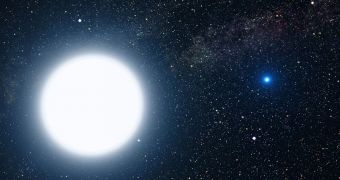Imagine staying younger and fit for a longer time just by eating, instead of getting older and fat... if only this process would be available for all of us. Last week took place the annual American Astronomical Society meeting in Austin, Texas, where astronomers presented the results of some of the latest studies conducted in the astronomical field. Amongst these, a group of astronomers which detailed what they have observed nearly three years ago while studying a white dwarf in the star cluster NGC 6791.
They argue that some white dwarfs can live longer just by swallowing one of the gas giants orbiting them. During its life a normal star sustains itself with the help of the nuclear fusion that take place inside it. Hydrogen is being processed into ever heavier elements, reaction which results in the release of high quantities of energy. The star is actually in a continuous oscillation trying to balance the gravitational force with the nuclear reactions. However, the star does not have an infinite amount of hydrogen fuel, and at a point in time it will start processing helium, thus losing the control over the nuclear reactions, which overpowers the gravitational force, contracting the core and expanding its outer layers.
While doing so, the star will grow into a red giant, before exploding into a supernova. Bran Hansen from the University of California, Los Angeles, revealed that the helium fusing process could be greatly affected if the star collides with a gas giant with a size comparable to that of Jupiter.
The calculations of the interactions which would take place in the case of such a collision reveal that the planet approaching the star would accumulate, with the help of its powerful gravitational field, part of the red giant's material. As a result, as the star explodes into a supernova to create a white dwarf, it will have less mass to eject into space, which would result in a much younger and less massive white dwarf burning at high enough temperatures to continue fusing helium gas.

 14 DAY TRIAL //
14 DAY TRIAL //